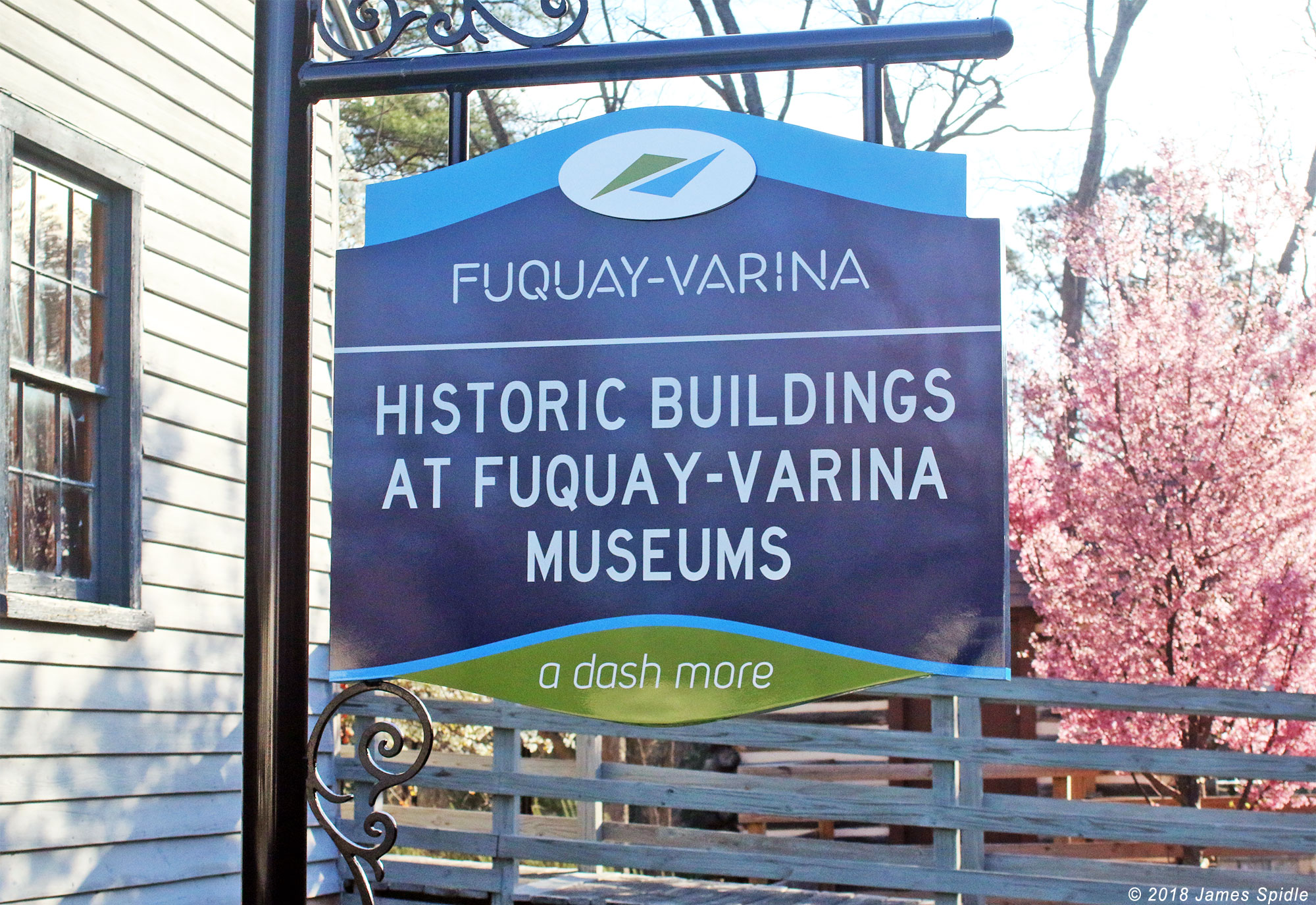The oldest brick building existing in town today seems to be that of the three part Varina Mercantile now known as Fellowship Bible Church and located across South Main Street from the Mineral Spring. It has been remodeled on the interior and the three-store front entirely changed by the church.

Affectionately known as “Mr. Joe’s Store” by all the persons who can actually remember the days of operation, the mercantile establishment opened circa 1899. J. D. “Squire” Ballentine had operated a store across the creek, in what is now the Mineral Springs Park today, at least as early as 1884. The Squire, his older brother, William, and William’s son, Joe were the three entrepreneurs of this new brick establishment.
The “Squire” appears to have been active as a Justice of the Peace, a post master, and a farmer, so he is not recalled as actually working in the store. William had married into the Jones family and was farming and living on Sunset Lake Road. Thus, the two brothers deferred to “Mr. Joe” as the merchant in residence.

According to Jane Person, the north section of the building had piece goods, shoes, and ready to wear. The middle section sold school books, supplies, and groceries. The third section handled hardware and farm equipment. The drive way into the building is still visible here. A large coal stove heated the store on the ground floor. Connecting doors could be opened within the inside. This configuration remained when it was an antique shop for a time. This author remembers the auction closing McCauley’s antiques when the three areas of the store were still evident.

Jane Person, who grew up in the Ballentine-Spence House, remembered that upstairs were apartments. Either one room or larger apartments were available for rent. A water faucet for running water was added when the town got running water in 1937. She recalled the one bathroom for the whole upstairs which would have come with running water.

“Miss Lizzie,” Joe’s wife ran a millinery shop, perhaps originally in the store but eventually next door in a separate building. Again Eleanor Howard can remember her mother buying hats from Miss Lizzie. Some say it was located in the little brown house beside the old hotel; Joe Starr says the Lane boys identified the building as one which was moved back behind the store.

In 1910, Mr. Joe was licensed to run a funeral home and the small addition to the south side of the three store front was added for that business. He purchased an ambulance which is shown in a 1926 picture. At first Ballentine only sold caskets, with families making all other provisions for a funeral. When his son-in-law, Lloyd Lane, became a licensed embalmer, the Ballentine’s Funeral Home expanded its services.
Shirley Hayes noted in an article for the Independent, “The first dead person I ever saw was in Mr. Joe Ballentine’s mortuary across the street from the spring. I was probably eight years old scouting about with neighborhood buddies on a summer evening. When we saw that no one was about, we sneaked up to the open door of the little wing on the south side of the building and peeped in to see a white-haired lady, beautifully coiffed, and dressed in a lavender gown, laid out in a coffin. The room was dimly lit. To us the scene was fascinating and a bit spooky as death is to children.”
Carolyn Blanchard and others remembered that Mr. Joe always gave children candy, a very generous serving when one only had a penny. Chester Holland remembered that his parents would only let them have candy at Christmas except when candy was offered from Mr. Joe. “Mr. Joe” was fondly remembered by all who were children of that era.
Chester’s father, J. C. Holland, and Mr. Joe were roommates at Elon College and the Hollands always traded with Mr. Joe. The museums have an 1904-1909 ledger donated by Bobby Barefoot which lists customers whose names are familiar in our area history. A valuable source of prices is available in this archived record.
Another record from a “faded” display listing which hung in the store details the extent of the merchandise. No author to this bit of rhyme was recorded.
Clothing for the naked,
Glasses for the blind;
Shoes for the barefooted,
Gloves that are lined.
Curtains for the windows,
Shoestrings and laces,
Lamps, wicks, and oil
To light the dark places.
Dried fruits, canned goods,
Everything to eat.
Caps for the head
And socks for the feet.
Woolen goods for dresses,
Ribbons for the old maids.
Tobacco for menfolk;
Hats for the ladies;
Toys for the children;
Bottles for the babies.
Queensware, glassware,
Pitchers and bowls;
Leather for harness
And leather for soles.
Straps and strings,
Buckles and screens;
The finest of silks,
And the coarsest of jeans.
Potatoes and apples,
Lard and meat;
Butter from the country,
Fresh and sweet,
Sugar and rice,
Beans and crackers,
Cheese and spice.
Oysters and salmon,
Flour and meal;
Mouse traps—and cats
To make the mice squeal.
Powder for hunters,
Axes for choppers,
And remedies for grunters.
Chewing gum, candy,
Corset and bustle;
The people come trading,
And how we do hustle.
Medicine to make you sick,
Medicine to make you well;
In fact, we have everything
That the best stores sell.
An old circular yellowed with age was the source of this piece furnished to the Independent in 1953 by Mr. Joe Ballentine.
Clyde Gilbert became a partner forming Ballentine Gilbert Funeral Home. The museums have calendars of 1949 advertising this establishment. Eventually Gilbert and Sugg purchased the Ballentine Funeral Home and moved the establishment to Academy Street. The museum has several calendars bearing names of this business. Mr. Joe retired shortly thereafter, circa 1949, and Varina Mercantile closed forever.
The building remained in the family and was home to several business renters. In 1985, it was sold to Mission Chapel Church. Needmore Bible Fellowship Church, Inc. took over the premises in 1991.
author: Shirley Simmons JAM
